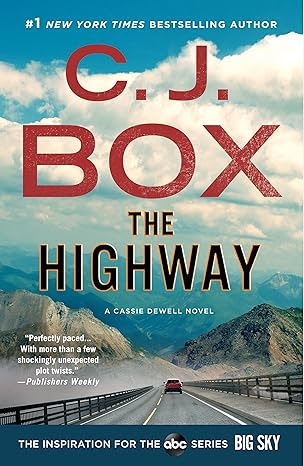The Last Stand: Custer, Sitting Bull, and the Battle of The Little Bighorn by Nathaniel Philbrick
Well-written, I learned quite a bit probably more than when I visited the battlefield
Published in 2010.
Published in 2010.
You just cannot talk about George Armstrong Custer without stirring controversy. Depending on the writer, Custer was a true American hero who was betrayed by his superiors and failed by his subordinates or he was a self-absorbed crazy racist imperialist that finally found someone that could fight back and taught him a lesson.
Our movies have shown this as well. Errol Flynn's They Died With Their Boots On (1941) made a hero of Custer while Little Big Man
(1941) made a hero of Custer while Little Big Man (1970) makes out to be a delusional nut.
(1970) makes out to be a delusional nut.
Sample of how Little Big Man depicts Custer:
In The Last Stand: Custer, Sitting Bull, and the Battle of The Little Bighorn, Philbrick notes these views and takes more of a middle road. Custer comes off as a more nuanced man. Ambitious, impetuous and overly confident, but not a fool. Plus, he had reasons for that confidence - the audacious, unexpected move had always worked for him in the past.
Sitting Bull, his opponent at the Battle of The Little Big Horn is similarly portrayed without much nuance in the literature. He is a symbol of resistance and Sioux culture, but not really portrayed as a thinking, living, breathing man. Sitting Bull was one of many Sioux leaders. He advocated rejecting white culture as long as possible, but realized that this was only possible for a certain amount of time. In this respect, this icon of resistance was, in fact, a realist that understood that, in the end, such resistance was futile.
Philbrick's title, The Last Stand, refers to two last stands - the famed last stand of Custer and, ironically, he notes that the same battle was really the last stand of the Sioux. Never again would they have so many warriors in one location - after the battle they scattered. Some went to the reservation, some left for Canada and some fought and died in smaller groups.
In many ways, The Last Stand is a well-written dual biography of Custer and Sitting Bull, and that additional background information makes the telling of the tale of the battle all that much more interesting.The background on Major Reno and Captain Benteen also heightened the drama of the tale.
Like I said in the title, I've been to the battlefield and I left no more informed to the actual timeline of the battle and how it transpired over the space than I was when I arrived - it is just too vast and there were not enough maps (this was more than 20 years ago so maybe things have changed at their interpretive center). Of course, with the actual troopers involved in the Custer's Last Stand, as opposed to those who were with Reno and Benteen, their movements in the battle are bound to be speculative.
The real strength of this book is Philbrick's ability to make a history read like a novel. The story is told with drama, is well-researched and does a good job of tying in other things that were going on in American history at the time. The information about the steamboats that traveled the Missouri was fascinating - I had no idea that they were so cleverly designed.
I rate this book 5 stars out of 5. It can be found on Amazon.com here: The Last Stand: Custer, Sitting Bull, and the Battle of The Little Bighorn by Nathaniel Philbrick.
Reviewed on July 11, 2011.
Our movies have shown this as well. Errol Flynn's They Died With Their Boots On
Sample of how Little Big Man depicts Custer:
In The Last Stand: Custer, Sitting Bull, and the Battle of The Little Bighorn, Philbrick notes these views and takes more of a middle road. Custer comes off as a more nuanced man. Ambitious, impetuous and overly confident, but not a fool. Plus, he had reasons for that confidence - the audacious, unexpected move had always worked for him in the past.
Sitting Bull, his opponent at the Battle of The Little Big Horn is similarly portrayed without much nuance in the literature. He is a symbol of resistance and Sioux culture, but not really portrayed as a thinking, living, breathing man. Sitting Bull was one of many Sioux leaders. He advocated rejecting white culture as long as possible, but realized that this was only possible for a certain amount of time. In this respect, this icon of resistance was, in fact, a realist that understood that, in the end, such resistance was futile.
 |
| George A. Custer (1839-1876) |
Philbrick's title, The Last Stand, refers to two last stands - the famed last stand of Custer and, ironically, he notes that the same battle was really the last stand of the Sioux. Never again would they have so many warriors in one location - after the battle they scattered. Some went to the reservation, some left for Canada and some fought and died in smaller groups.
 |
| Sitting Bull (c. 1831-1890) |
Like I said in the title, I've been to the battlefield and I left no more informed to the actual timeline of the battle and how it transpired over the space than I was when I arrived - it is just too vast and there were not enough maps (this was more than 20 years ago so maybe things have changed at their interpretive center). Of course, with the actual troopers involved in the Custer's Last Stand, as opposed to those who were with Reno and Benteen, their movements in the battle are bound to be speculative.
The real strength of this book is Philbrick's ability to make a history read like a novel. The story is told with drama, is well-researched and does a good job of tying in other things that were going on in American history at the time. The information about the steamboats that traveled the Missouri was fascinating - I had no idea that they were so cleverly designed.
I rate this book 5 stars out of 5. It can be found on Amazon.com here: The Last Stand: Custer, Sitting Bull, and the Battle of The Little Bighorn by Nathaniel Philbrick.
Reviewed on July 11, 2011.











Comments
Post a Comment